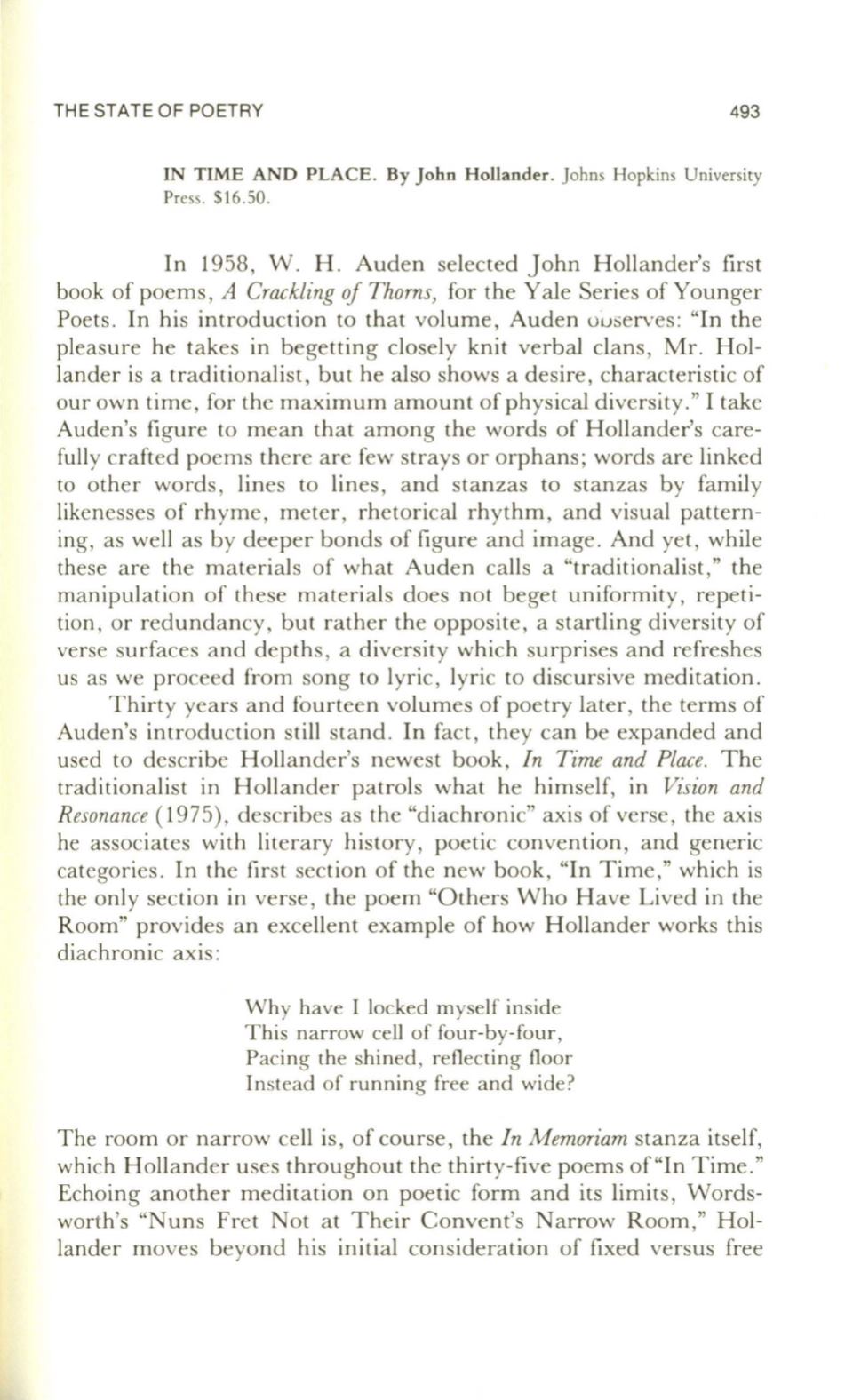
THE STATE OF POETRY
493
IN TIME AND PLACE. By
John Hollander. Johns Hopkins University
Press. $16.50.
In 1958, W. H. Auden selected John Hollander's first
book of poems,
A Crackling oj Thorns,
for the Yale Series of Younger
Poets. In his introduction to that volume, Auden ouserves: "In the
pleasure he takes in begetting closely knit verbal clans, Mr. Hol–
lander is a traditionalist, but he also shows a desire, characteristic of
our own time, for the maximum amount of physical diversity." I take
Auden's figure to mean that among the words of Hollander's care–
fully crafted poems there are few strays or orphans; words are linked
to other words, lines to lines, and stanzas to stanzas by family
likenesses of rhyme, meter, rhetorical rhythm, and visual pattern–
ing, as well as by deeper bonds of figure and image. And yet, while
these are the materials of what Auden calls a "traditionalist," the
manipulation of these materials does not beget uniformity, repeti–
tion, or redundancy, but rather the opposite, a startling diversity of
verse surfaces and depths, a diversity which surprises and refreshes
us as we proceed from song to lyric, lyric to discursive meditation.
Thirty years and fourteen volumes of poetry later, the terms of
Auden's introduction still stand. In fact, they can be expanded and
used to describe Hollander's newest book,
In Time and Place.
The
traditionalist in Hollander patrols what he himself, in
Vision and
Resonance
(1975), describes as the "diachronic" axis of verse, the axis
he associates with literary history, poetic convention, and generic
categories. In the first section of the new book, "In Time," which is
the only section in verse, the poem "Others Who Have Lived in the
Room" provides an excellent example of how Hollander works this
diachronic axis:
Why have I locked myself inside
This narrow cell of four-by-four,
Pacing the shined, reflecting floor
Instead of running free and wide?
The room or narrow cell is, of course, the
In Memoriam
stanza itself,
which Hollander uses throughout the thirty-five poems of "In Time."
Echoing another meditation on poetic form and its limits, Words–
worth's "Nuns Fret Not at Their Convent's Narrow Room," Hol–
lander moves beyond his initial consideration of fixed versus free


